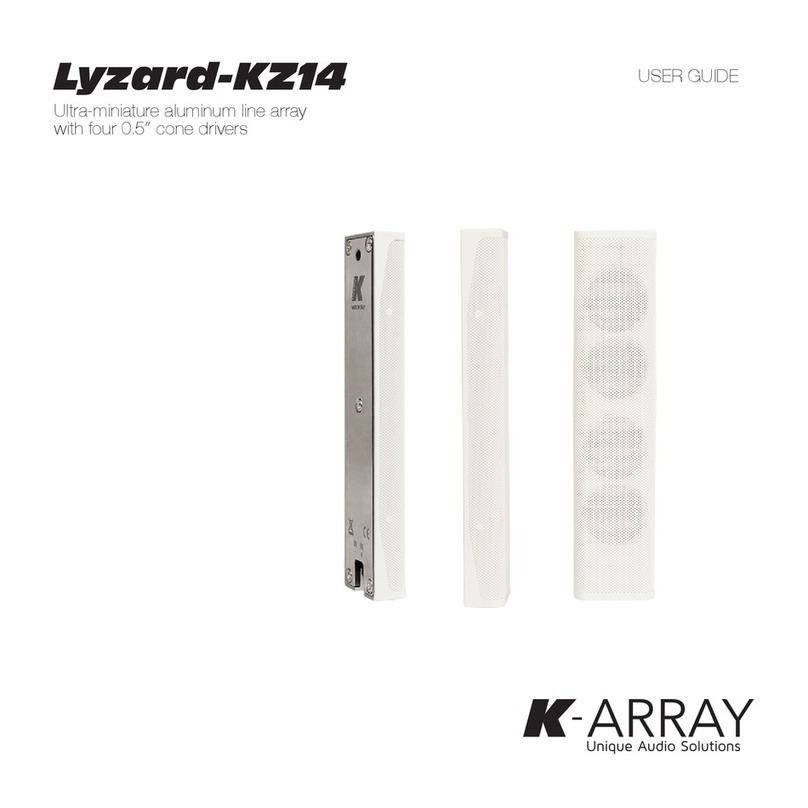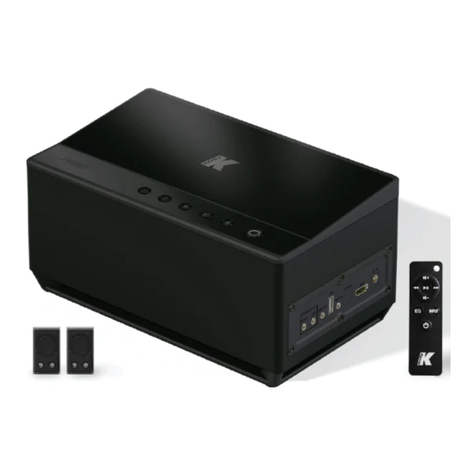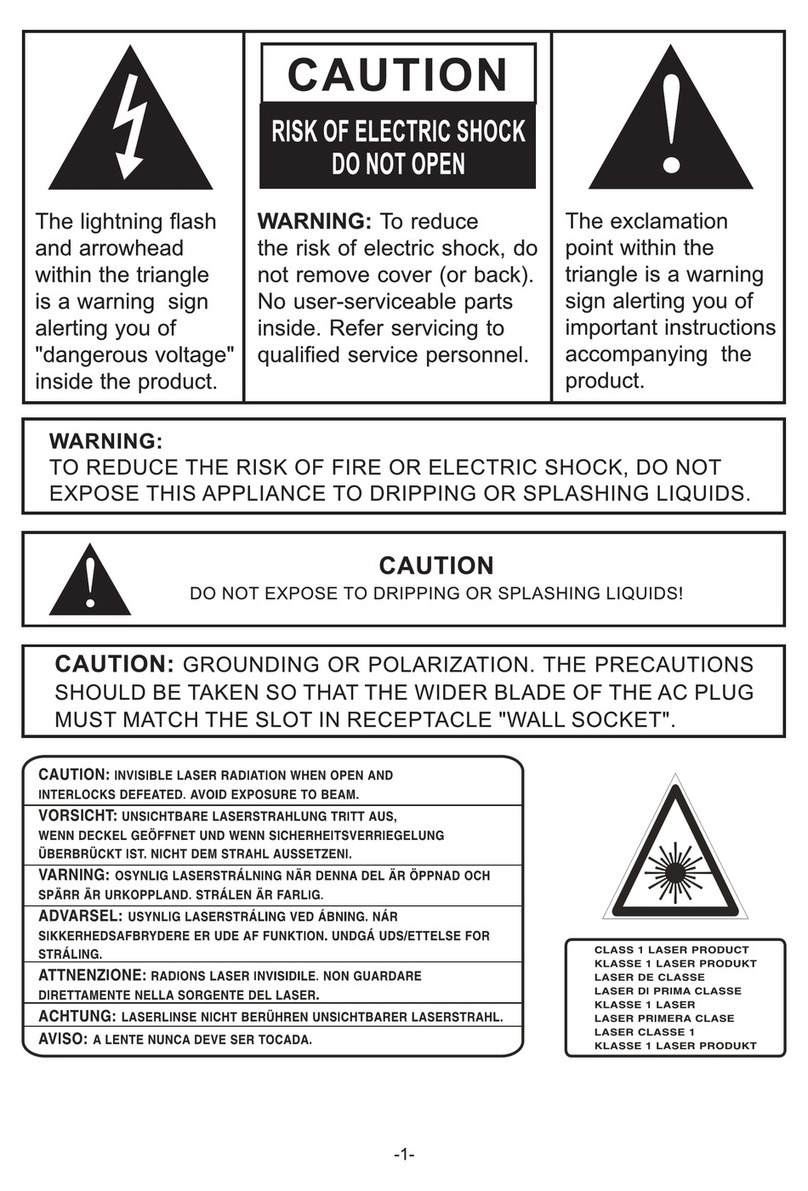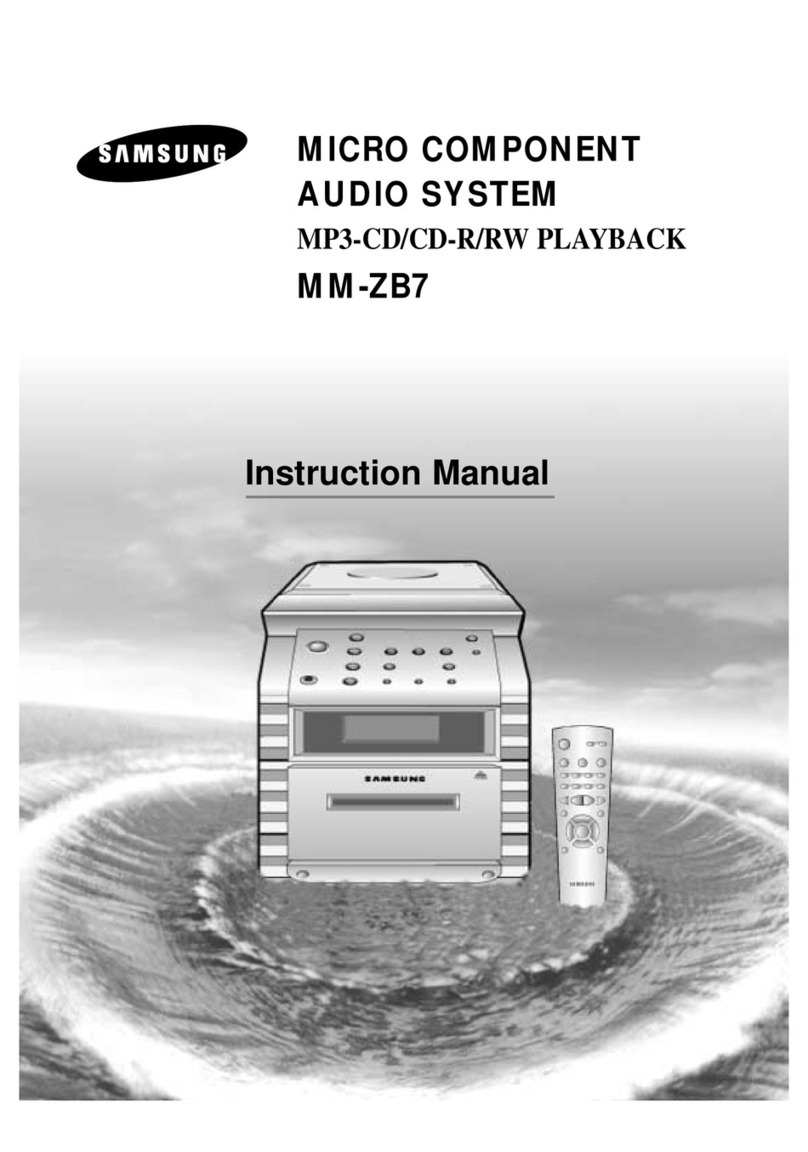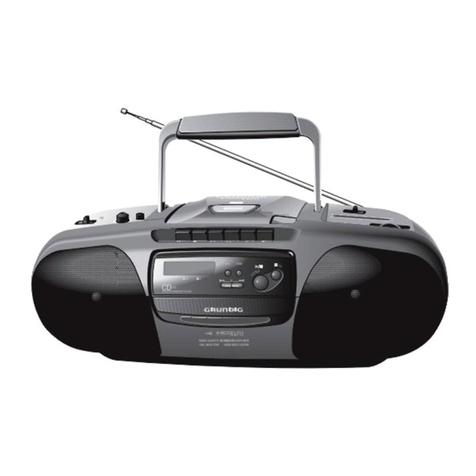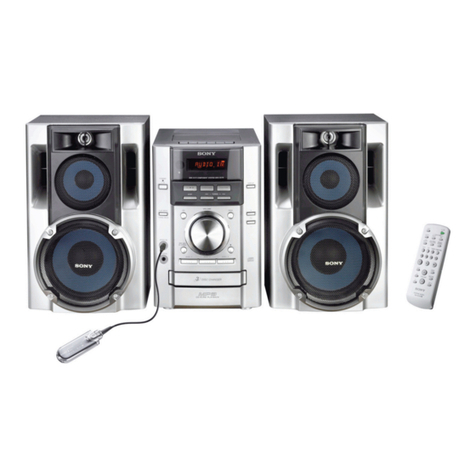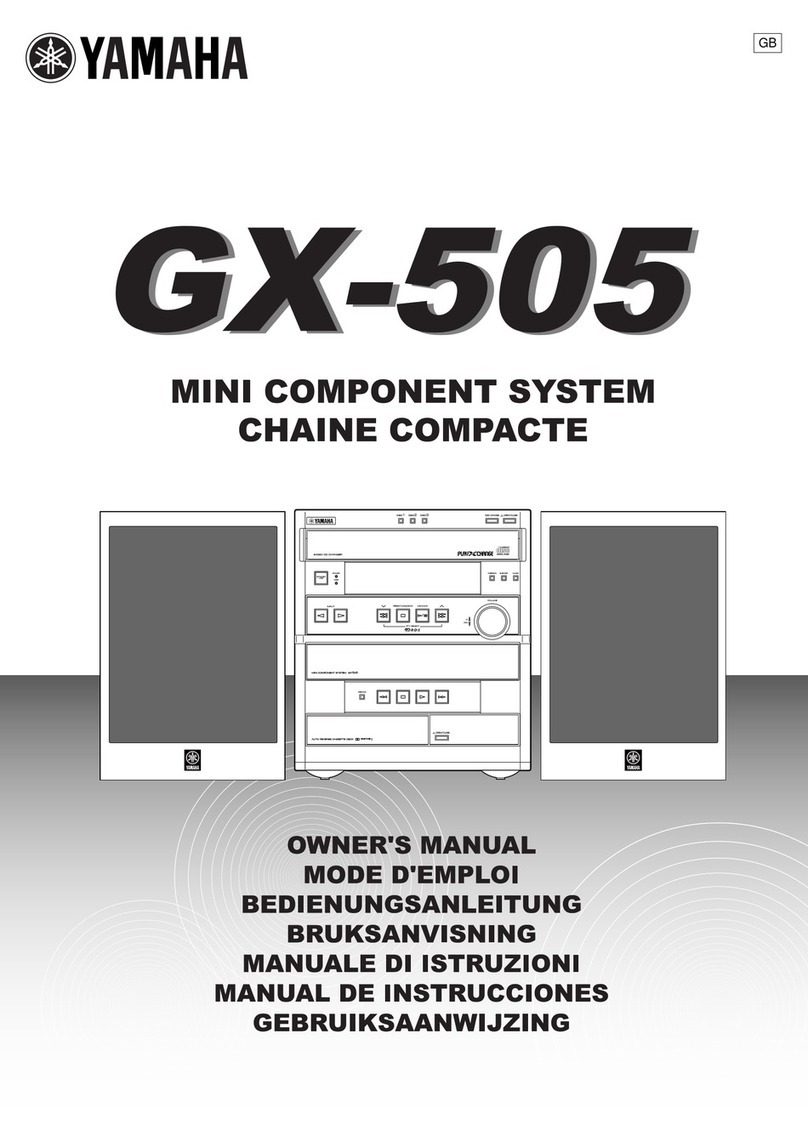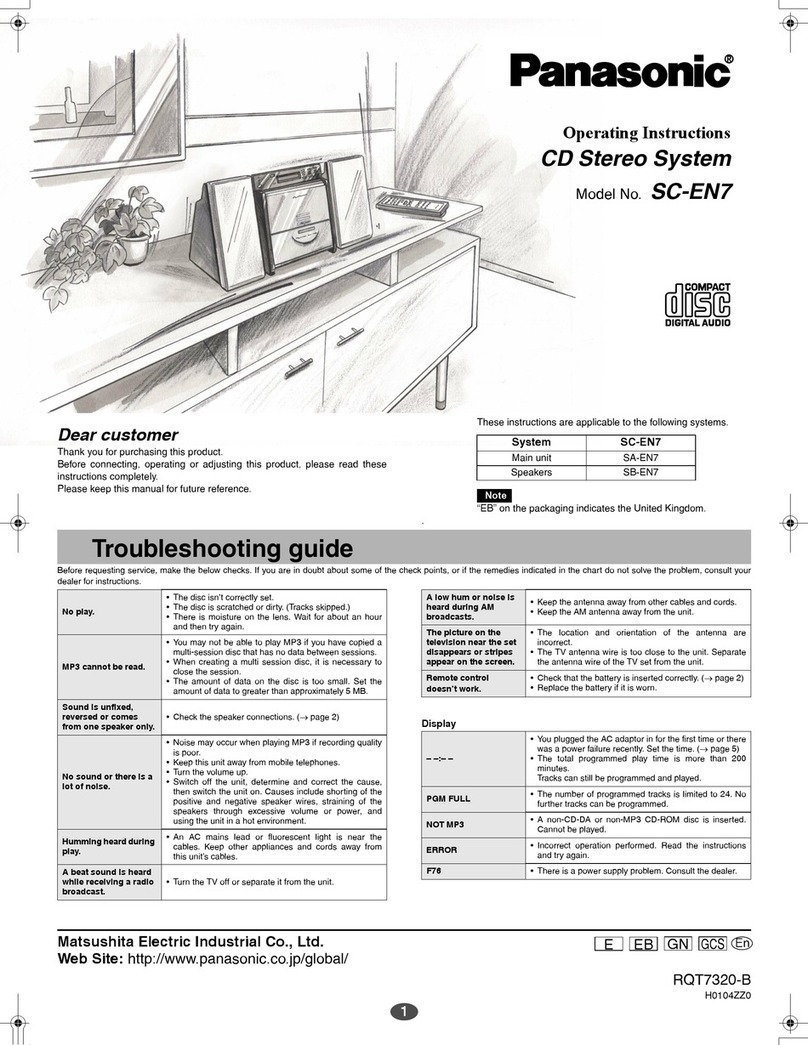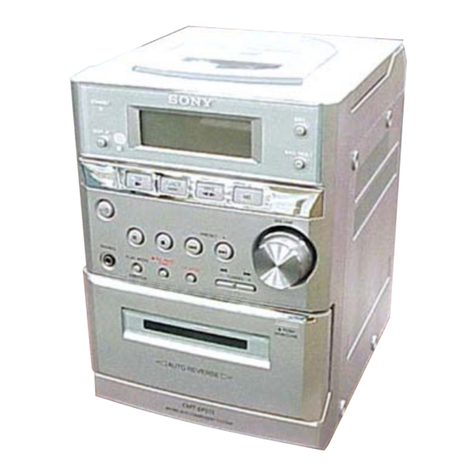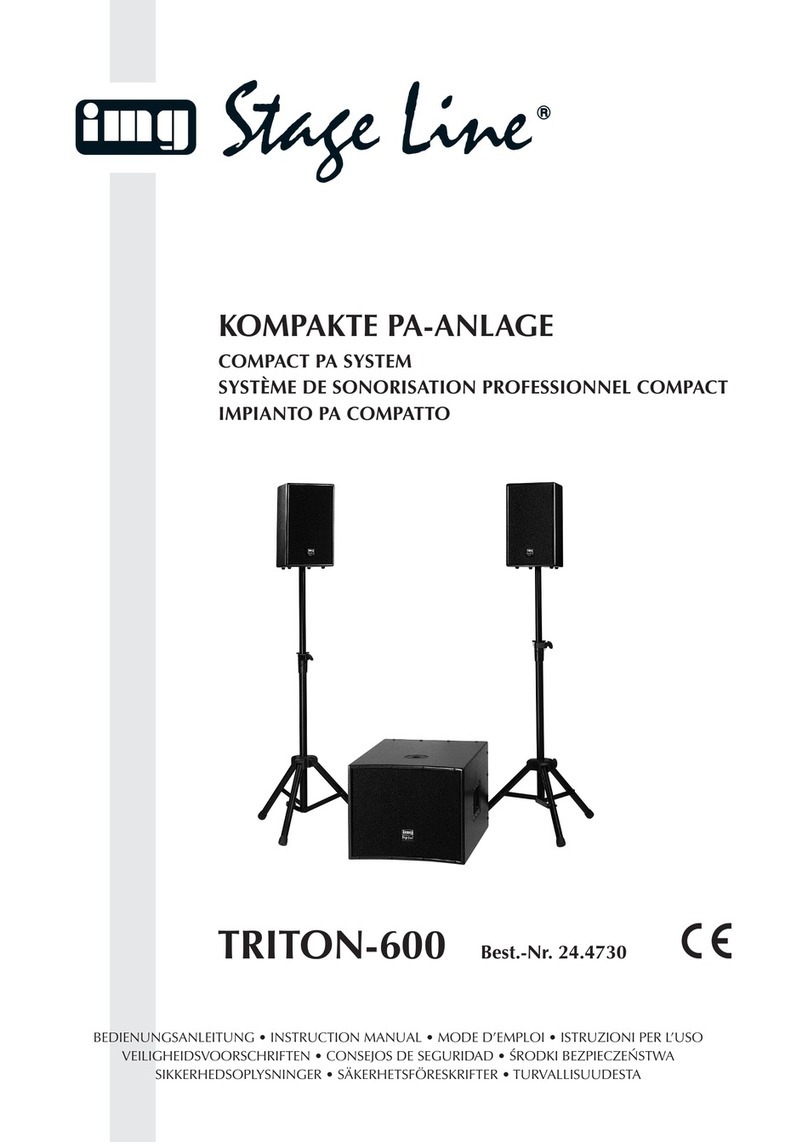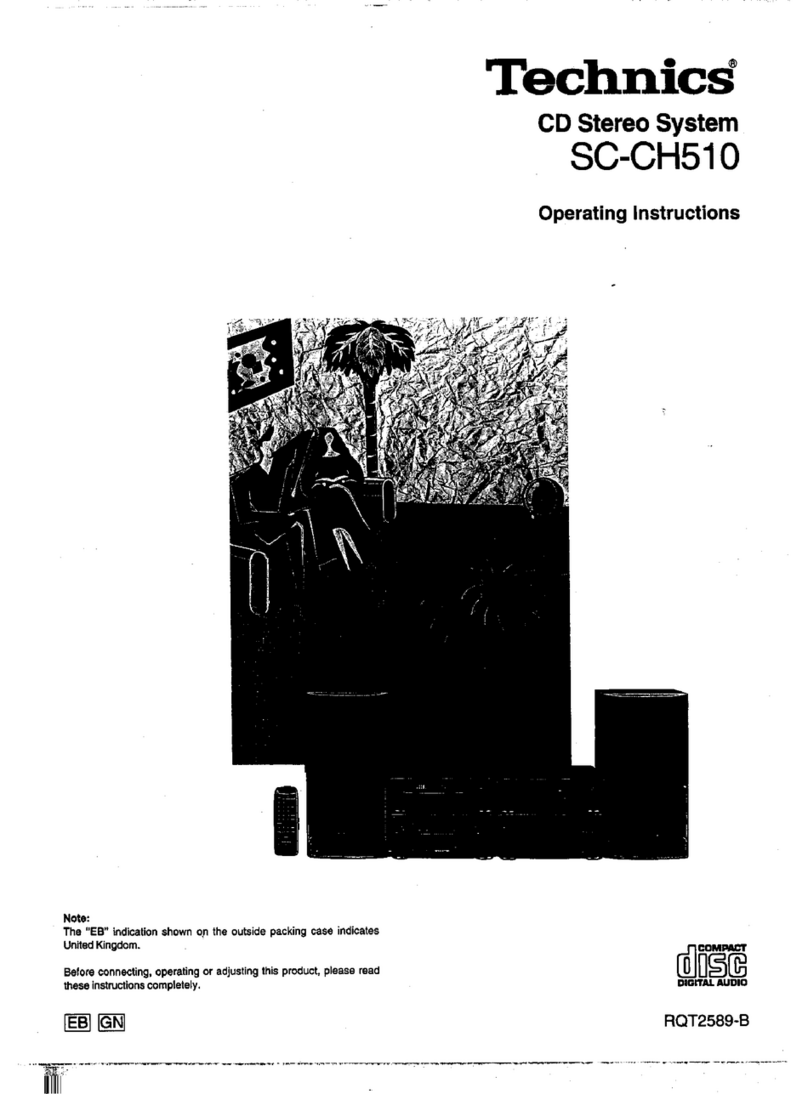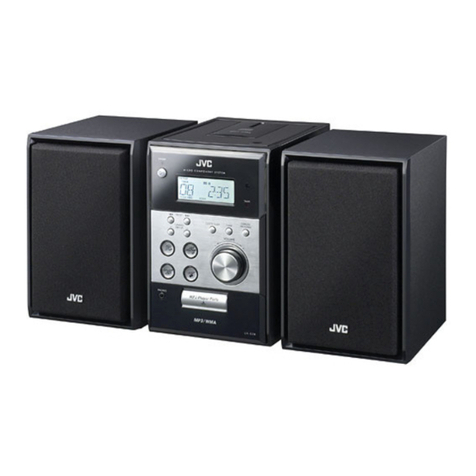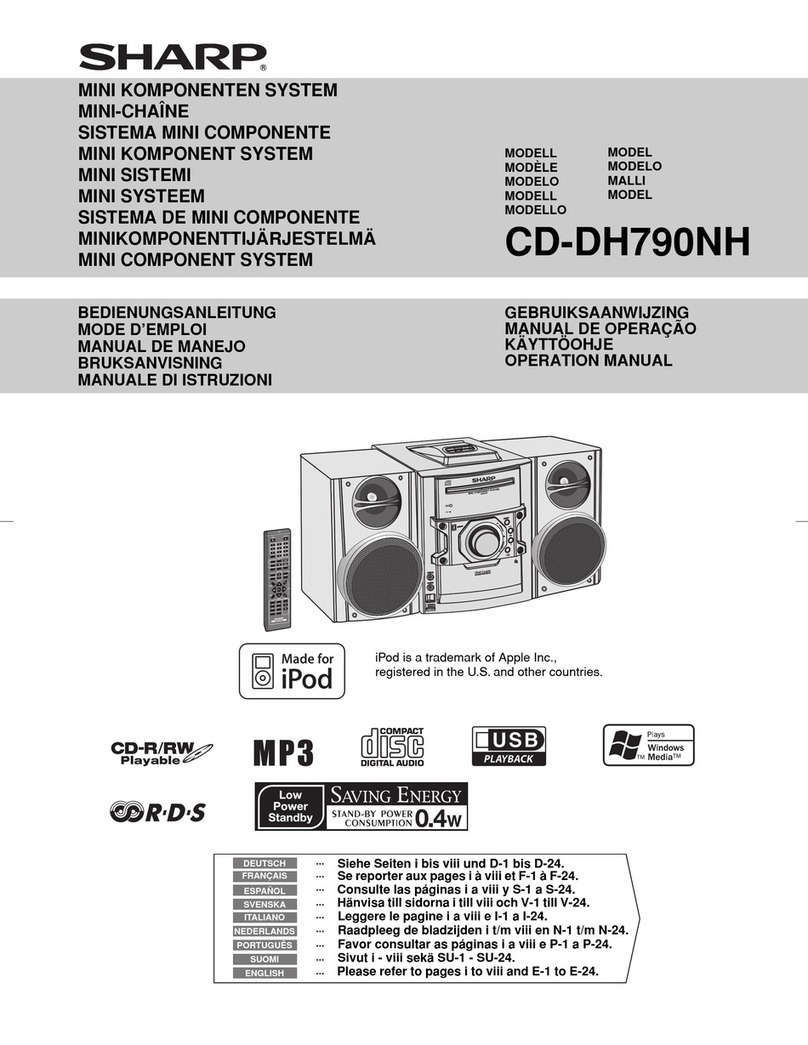K-array KB1 User manual

KB1
USER MANUAL
english version
KB1

KB1

3
rev. C
KB1
CONTENTS
SYMBOLS 4
1. INTRODUCTION 6
2. APPLICATIONS 6
3. ADVANTAGES FOR MUSICIANS 7
4. UNPACKING 9
5. PACKAGE CONTENTS 9
6. SAFETY INSTRUCTIONS 10
7. PHYSICAL 11
8. POWER AND VOLTAGE REQUIREMENTS 12
8.1 AC Power connector 12
8.2 Voltage requirement 13
9. INPUT PANEL OVERVIEW 14
10. AUDIO CONNECTOR WIRING 17
11. CONFIGURATION OPTIONS AND SET UP 19
12. MIXER AND DSP 24
13. K-FRAMEWORK 25
13.1 System requirements 25
13.2 Installation and set up 25
13.3 Getting started 28
14. CUSTOMER SERVICE 42
15. KB1 Technical Details 43
APPROVAL 44

4
rev. C
KB1
This symbol alerts the user to the presence of recommendations about product’s
use and maintenance.
This symbol, wherever it appears, alerts you to important operating and
maintenance instructions in the accompanying literature. Read the manual!
Warning! Dangerous voltages: RISK of electric shock.
K-array declares that this device is in compliance with the applicable
CE standards and regulations. Before putting the device into operation,
please observe the respective country-specic regulations!
WEEE
Please dispose of this product at the end of its operational lifetime by
bringing it to your local collection point or recycling centre for such
equipment.
This device complies with Restriction of Hazardous Substances Directive.
SYMBOLS

5
rev. C
KB1

6
rev. C
KB1
1. INTRODUCTION
KB1
2. APPLICATIONS
• Band
• Piano bar
• Solo
• DJ
The KB1 fits perfectly into the K-array brand by combining innovation and quality.
What makes it special is that it is immediately recognizable as a product which was
developed in an environment (K-array) which is orientated towards the “professional”
sector.
Some of the features found on-board the KB1 are unique in the entire panorama of
products on offer, and are the same as those used in stage set up during concerts
(e.g. the medium-high speaker has the ability to electronically vary the height of sound
diffusion).
The completeness of the instrumentation, for example the capacity to load different
presets simply and at any time from a PC, the control of entry sound through an
integrated professional digital mixer, and the ability to electronically modify the extent
and the coverage of the sound vertically, make the KB1 versatile and applicable to any
situation with notable levels of quality.
The materials are the same as those used in high calibre concert systems: steel,
aluminium and wood. These high-quality materials are normally used in professional
standard products.
• Light orchestra
• Audio/Visual
• Speech

7
rev. C
KB1
3. ADVANTAGES FOR MUSICIANS
3.1 The musician and his/her sound
PCs are becoming ever more part of the musician’s personal equipment and with a
KB1 you become the true craftsman of your own sound. You can connect to your own
amplification system while interacting directly with digital sound processors mounted
on board. This is an uncomplicated way of designing the sound according to your
personal tastes and preferences. The digital mixer with 4 inputs allows those with
more than one instrument to produce a unified sound, either with a sound technician
or directly to the public, created according to the musician’s personal artistic choices.
Input levels, EQ parameters on each input channel, multi-effects with 16 presets,
compressors, regulation of an auxiliary output, a headphones output, a main output
channel and parameter filters for equalizing the speaker on output, are all instruments
you can find on board the main integrated mixer.
3.2 Transportability and easy-handing
Compactness, light-weight design and transportability mark the KB1, ensuring its
seamless integration into a musician’s kit. In fact one of the KB1’s strengths is its
easy-handling. The unit is equipped with materials and case which enable you to load
and unload easily, even with a small car, such as a hatchback. The sub is protected by
a padded cover designed to insulate the sub from bumps and scratching. This allows
the KB1 to be transported comfortably together with all the cables needed for set up.
The medium-high speaker is contained in a hard case, which ensures it cannot be
damaged in transit.
The designers of the KB1 have chosen materials which are commonly used in
professional quality products. Plastic materials have been deliberately avoided, in
order to give the system the resilience required for professional use. Wood, steel
and aluminium have been chosen to forge the BlueLine; perfectly matching the
characteristic quality of the K-array brand.
3.3 Set up, configuration, performance
Standard connections like speakon, XLR and jack guarantee that the cabling is easy
and familiar to the user. In this way, even in an emergency, the cables provided in the
packaging at the moment of purchase can easily be substituted for commonly available
cables of the same type.

8
rev. C
KB1
A 12” subwoofer for bass and eight 3” loudspeakers for medium-high frequencies
guarantee elevated performance, preserving the timbre quality of the instruments and
voices. Configuration using a central pole for the medium-highs makes the KB1 a true
line-array from the point of view of sound emission. It projects sound pressure which
remains constant even at distance, and which covers the listening area with great
precision and uniformity.
The presets which process the output sound enable sound optimization for numerous
types of use and varied environments.
All of the characteristics which have been described so far, not to mention the facility
for modular integration of several KB1s as required, make the system an extremely
versatile tool, adaptable as monitor, amplification for solo-artists and, if doubled-up,
as the main stereo PA system for an event. A special rubber support accessory,
which comes with the kit, enables the system to be used as a monitor or as a front fill,
by laying the medium-high unit horizontally and varying the inclination.

9
rev. C
KB1
4. UNPACKING
5. PACKAGE CONTENT
Each K-array device is built to the highest standard and thoroughly inspected before
leaving the factory. Carefully inspect the shipping carton, then examine and test your
new loudspeaker. If you find any damage immediately notify the shipping company.
Only the consignee may institute a claim stages in the system’s electronic equipment.

10
rev. C
KB1
6. SAFETY INSTRUCTIONS
• It is important that loudspeaker systems are used in a safe manner.
• Professional loudspeakers are capable of producing extremely high sound levels
and should be used with care. Hearing loss is cumulative and can result from levels
above 90 dB if people are exposed for an extended period.
• Never stand close to loudspeakers driven at high volume.
• Suspending the system should only be done by qualied personnel following safe
rigging practices. Secure xings to the building structure are vital. Seek help from
architects, structural engineers or other specialists if in any doubt.
• Do not operate the speaker for an extended period of time with sound distortion.
This is an indication of malfunction, which in turn can generate heat and result in a
re.
• Only connect the power supply to an appropriate power adapter.
• Do not install the speaker in wet or humid locations without using weather
protection.
• Do not allow water or any foreign object to get inside the speaker. Do not put
objects containing liquid on, or near, the unit.
• To reduce the risk of overheating the amplier, avoid exposing it to direct sunlight.
Do not install the unit near heat emitting appliances, such as a room heater or stove.
• No naked ame sources such as lighted candles should be placed near the device.
• The speaker should be placed so that its location does not interfere with its proper
cooling.
• Do not attempt to disassemble the unit. The unit contains no user-serviceable
parts. Repairs should only be performed by factory trained service personnel.
• Be sure that the adapter has the correct voltage value.
WARNING

11
rev. C
KB1
7. PHYSICAL
178-220 cm
(70”-86”)
32.5 cm
(12.8”)
43.5 cm
(17.13 ”)

12
rev. C
KB1
8. POWER AND VOLTAGE REQUIREMENTS
8.1 AC Power connector
The amplifier module and the rest of the audio equipment connected to it (mixing
consoles, processors, etc.) must be connected to the AC power distribution in
the correct way, preserving AC line polarity and connecting earth ground, so that
all grounding points are connected to a single node or common point using the
same cable gauge as the neutral and line(s) cables. Bad grounding connections
between speakers and the rest of the audio system may produce noise, hum and/
or serious damage to the input/output stages in the system’s electronic equipment.
Before applying AC to any K-array self-powered speaker, be sure
that the voltage potential difference between neutral and earth
ground is less than 5 VAC.
Amplied signal
to the TOP
AC Power
INPUT

13
rev. C
KB1
8.2 Voltage requirement
KB1 operates safely and without audio discontinuity if the AC voltage stays
within both 85-132 V and 170-264 V , at 50 or 60 Hz.
Verify that your mains connection satisfies the power ratings of the device.
CAUTION
Connecting the system to an AC power mains with a
voltage exceeding 270V will cause significant damage
to the device and create a serious risk for users!

A
B
C
D F G
E
H
I
J
K
L
M
N
O
P
S
T
R
U
QV
14
rev. C
KB1
9. INPUT PANEL OVERVIEW

15
rev. C
KB1
A) CH1 TS (unbalanced jack) input. Use this input when using the module as
Right side in a stereo configuration.
B) CH1 XLR balanced (cannon) phantom powered input.
C) CH1 XLR link output. This is a direct physical parallel link ONLY to CH1
XLR input.
D) Mic/line Mode Selector. Mic Mode for mic level signals (-50 to -10 dB), Line
Mode for line level input (-10 to +14 dB)
E) CH2 TS (unbalanced jack) input.
F) DIRECT IN (MIXER OFF) Switch Button. When DIRECT IN is ON all the
DSP functions are bypassed, except for the Main LEVEL knob on the physical
Mixer Panel (see S) and the virtual Master Volume Fader (see C11 and D18).
N.B.: a KB1 in DIRECT IN Mode can only be used as the Right side of a stereo
configuration system of 2 x KB1. We advise against connecting any signal to
the KB1 serving as Right Side in the stereo configuration, other than the XLR
coming from the DI Out / Out R output of the main KB1 (serving as Left Side
of the stereo). In a stereo configuration all signals must be connected to the
Left Side module, where all DSP functions are active and DIRECT IN is OFF.
G) CH1 and CH2 Gain LEVEL Knobs regulate the amount pre-amplification
level of the corresponding input.
H) SPEAKER OUT NL4 (Speakon) Output. Connect to the Mid-High module
of KB1. N.B.: to ensure correct operation of the system, ONLY use a 4-way
Speakon connection.
I) CH2 XLR balanced (cannon) phantom powered input.
J) CH3 TS unbalanced (jack) Input for Line Level signals.
K) CH3 double RCA Input for Line Level signals.
L) CH4 TS (unbalanced jack) Input for Line Level signals.
M) CH1 and CH2 FX Send Knobs regulate the amount of signal to be sent from
the corresponding channel to the Effect Processor.
N) Aux Out TRS (balanced jack) Output.
O) Headphones TRS (stereo jack) Output.
P) DI Out / Out R XLR (cannon) Output.
Q) USB Remote Control plug for Remote Management via K-Framework
software.
R) POWER Switch Button.

16
rev. C
KB1
S) Main Level Knob which regulates the overall amplitude of the output signal.
T) Power Plug.
U) FX Presets Selector Knob selects one of the 16 available Effects:
1) Slap-back Delay: Short Echo with almost no
feedback.
2) Stereo Delay: Long Echo with some feedback.
Repetitions are alternated between Left and Right
output.
3) Big Ambience: simulates the acoustic
response of a very large generic ambience.
4) Early Reections: simulates the rst refelctions of soundwaves against the
walls of a generic closed ambience.
5) Chorus: classic chorus effect.
6) Echo: Length and Feedback are similar to nr. 2 (Stereo delay) but repetitions
are mono assigned.
7) Flanger: classic anger effect.
8) Phaser: classic phaser effect.
9) Spring Reverb: digital implementation of a spring reverb.
10) Chapel Reverb: simulates the acoustic response of a chapel.
11) Gated Reverb: reverberation effect with an early and sharp decay.
12) Reverse Reverb: general reverb with reverse output.
13) Church Reverb: simulates the acoustic response of a church.
14) Room Reverb: simulates the acoustic response of a medium-sized room.
15) Big Hall Reverb: simulates the acoustic response of a big concert hall.
16) Small Hall Reverb: simulates the acoustic response of small concert hall.

17
rev. C
KB1
10. AUDIO CONNECTOR WIRING
hot grd
cold
hot
grd
cold
INPUT PARALLEL OUTPUT
Balanced Jack
hot
hot
ground
1+ 1+
1-
2- 2-
1-
2+ 2+
cold cold
ground
The back panel of the KB1 has different types of audio connector for different
types of entry cable. The following diagrams highlight the different characteristics
of each entry:
XLR wiring Speakon wiring
CH 1,2 MIC INPUT
CH 2 MIC PARALLEL OUTPUT
MAIN Right OUTPUT / D.I OUT
Jack wiring
Aux OUT
Amplied signal for the top.
4-WIRE speaker cable is required

18
rev. C
KB1
Unbalanced Jack
CH 1,2 Instrument INPUT
CH 3,4 Line INPUT
hot
ground
hot
Tip
Tip
ground
Sleeve
Sleeve
RCA wiring
CH3,4 stereo line INPUT

19
rev. C
KB1
11. CONFIGURATION OPTIONS AND SET UP

Amplied signal
to the TOP
AC Power
INPUT
20
rev. C
KB1
Table of contents
Other K-array Stereo System manuals
